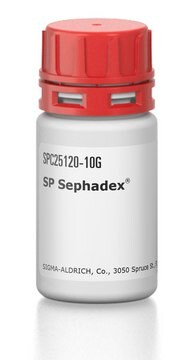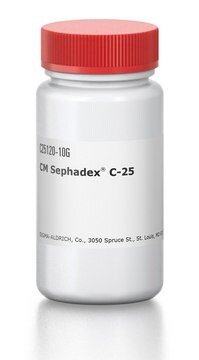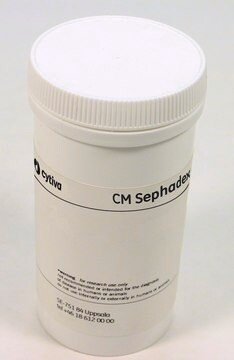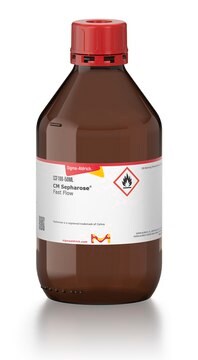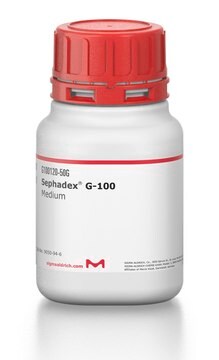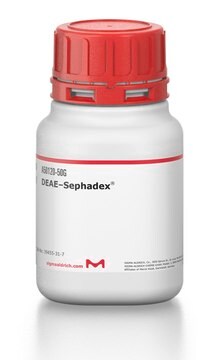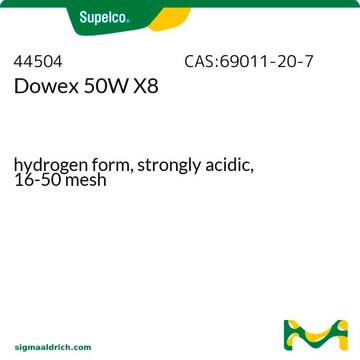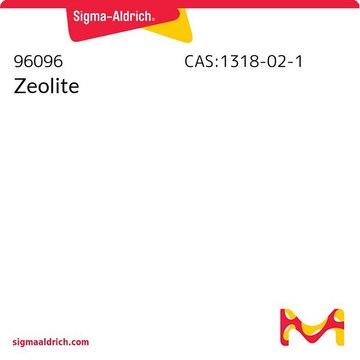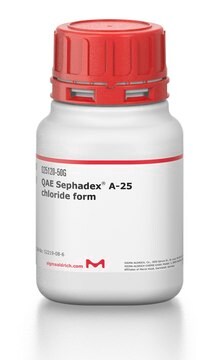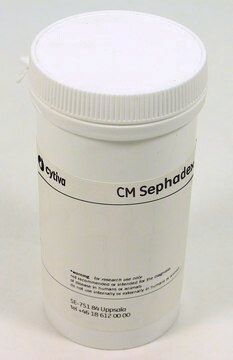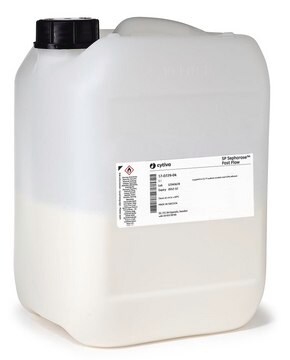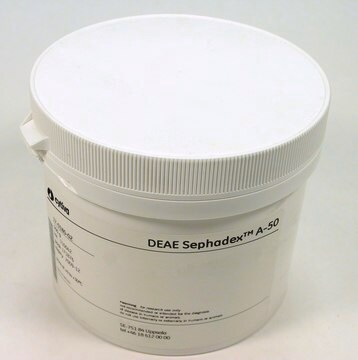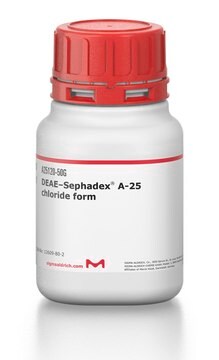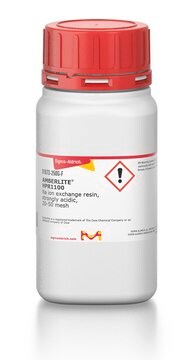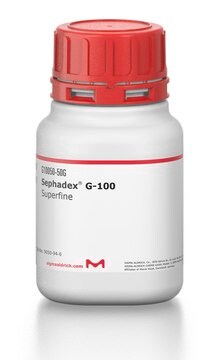SPC50120
SP Sephadex® C-50 sodium form
Synonym(s):
Sulfopropyl Sephadex®
Sign Into View Organizational & Contract Pricing
All Photos(2)
About This Item
Recommended Products
bead size
40-125 μm (dry)
Quality Level
pore size
200,000 exclusion limit (av. mol. wt.)
operating pH
2-10
capacity
2.0-2.8 meq/g ion exchange capacity
2.0-2.8 meq/g
compatibility
mode of use strong cation exchange chromatography
Application
SP Sephadex® is used in protein chromatography, ion exchange chromatography and cation exchange media. SP Sephadex® has been used to study human tumors as well as to discuss the biochemical basis for the use of mebendazole in the treatment of echinococcosis.
Legal Information
Sephadex is a registered trademark of Cytiva
Storage Class Code
11 - Combustible Solids
WGK
WGK 3
Flash Point(F)
Not applicable
Flash Point(C)
Not applicable
Personal Protective Equipment
dust mask type N95 (US), Eyeshields, Gloves
Choose from one of the most recent versions:
Already Own This Product?
Find documentation for the products that you have recently purchased in the Document Library.
Customers Also Viewed
B G Wallace
The Journal of neuroscience : the official journal of the Society for Neuroscience, 10(11), 3576-3582 (1990-11-01)
Heparin and heparan sulfate have been shown to block nerve-induced acetylcholine-receptor (AChR) aggregation at developing neuromuscular junctions. We found that heparin, heparan sulfate, and a wide variety of other polyanions also inhibited agrin-induced AChR aggregation. The more highly charged the
A convenient large scale preparation of the EE isozyme of horse liver alcohol dehydrogenase.
D C Anderson et al.
Analytical biochemistry, 99(2), 392-398 (1979-11-01)
Isolation and partial characterization of a porcine thyroglobulin-binding <I>Phaseolus vulgaris</I> L. lectin.
Bonorden, W.R., and Swanson, B.G.
Food Chemistry, 44(3), 227-233 (1992)
Haemolytic factor from the crop of <I>Rhodnius prolixus</I>: Evidence and partial characterization.
de Azambuja, P., et al.
Journal of Insect Physiology, 29(11), 833-837 (1983)
S Cheley et al.
Protein engineering, 10(12), 1433-1443 (1998-05-23)
Staphylococcal alpha-hemolysin is a water soluble, monomeric, bacterial exotoxin, which forms heptameric pores in membranes. The rate determining step in assembly is the conversion of a heptameric prepore to the fully assembled pore in which the central glycine-rich domain of
Our team of scientists has experience in all areas of research including Life Science, Material Science, Chemical Synthesis, Chromatography, Analytical and many others.
Contact Technical Service